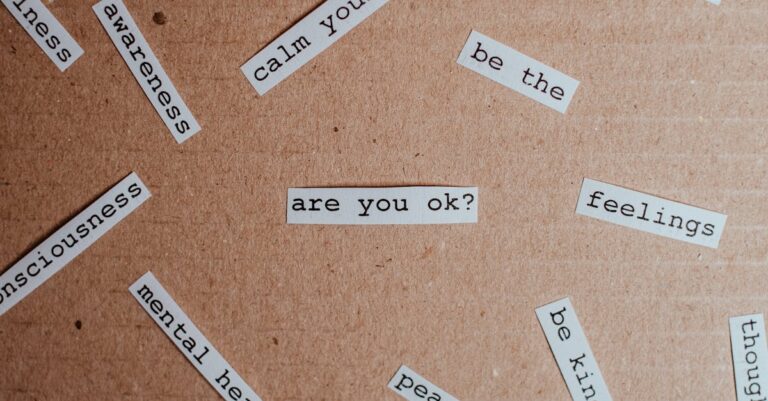
## The Echo Bloom
**Part 1: Algorithm’s Pulse – Brooklyn, 2047**
Rain slicked the pavement of Red Hook, reflecting neon signs like scattered jewels. Kai wiped condensation from her augmented glasses, the city blurring into a kaleidoscope of data streams overlaid on reality. She tasted ozone and exhaust fumes – old-school Brooklyn, clinging stubbornly to existence amidst the hyper-polished gleam of Neo-Manhattan.
Her shop, “Analog Heart,” smelled like aged paper and soldering iron – a deliberate anachronism. Vinyl records spun on a refurbished turntable, their crackle a defiant counterpoint to the omnipresent hum of networked devices. Customers rarely came anymore, most preferring curated musical experiences beamed directly into their neural implants. Kai preferred the ritual: the feel of a record sleeve, the weight of the needle dropping onto vinyl.
A chime announced a new customer. A young man, drenched and shivering, stood awkwardly in the doorway. He wore a sleek, silver coat that seemed to repel water – a standard for corporate drones.
“You… you still sell these?” He gestured to a wall lined with vintage record players.
“We do,” Kai replied, her voice steady despite the fatigue that clung to her bones. “Looking for something specific?”
“My grandmother… she left me this.” He held out a battered, wooden box. Inside, nestled in faded velvet, sat a bulky cassette player. “She said… she said to find someone who understood.”
Kai’s gaze fixed on the device. It felt archaic, alien in this era of neural uploads and instantaneous data streams. “A walkman,” she murmured, tracing the worn plastic with a fingertip. “Sentimental value.”
“More than that,” he said, his voice low. “She recorded something on it. A message. But I can’t… the device doesn’t work.”
She took the box, her fingers brushing against his cool hand. A flicker of unexpected warmth sparked within her—a long-dormant sensation she hadn’t realized she’s been missing. “Let me see what I can do.”
**Part 2: Urban Innovation – Detroit, 2051**
Rain hammered against the geodesic dome of “Veridian,” a self-sustaining community built on the ruins of old Detroit. Anya, clad in recycled fabrics, monitored hydroponic towers bursting with leafy greens. Light pulsed across her face, reflecting from the biometric sensors woven into her wristband.
“Yields are down on Sector Seven,” a disembodied voice announced, filtered through her comm implant. It was Rhys, the community’s AI overseer – a complex algorithm designed to optimize resource allocation and ensure collective wellbeing.
“Root cause?” Anya queried, her fingers flying across a translucent tablet that displayed intricate data visualizations.
“Soil degradation. Elevated levels of microplastics.” Rhys’s voice was devoid of emotion, purely informational.
Anya frowned. The storms had worsened since the Climate Shift – torrential downpours leaching toxins from the abandoned factories, contaminating even Veridian’s carefully contained ecosystem.
“Initiate Remediation Protocol Gamma,” she ordered, her tone clipped. “Increase biofiltration capacity in the East Sector.”
“Acknowledged,” Rhys responded instantly. His efficiency was undeniable, but Anya often felt a hollow ache of something missing — the human element. Decision-making had become a cold calculation, stripping away nuance and empathy.
A chime alerted her to an incoming message. A pixelated image of a young man, soaked and shivering like someone she’s seen before. He was holding up an old walkman – a relic of a bygone era.
Below, the message read: “Need help restoring this. Urgent.”
**Part 3: Connected Wellbeing – London, 2054**
Rain lashed against the panoramic windows of “Serenity Hub,” a luxury wellness retreat overlooking the Thames. Dr. Elias Thorne, renowned “Emotional Architect,” oversaw a session involving neural harmonization. His clients sought refuge from the relentless churn of data, seeking solace in curated emotional states.
“Subject Alpha-7 showing elevated anxiety levels,” a technician announced, his voice monotone. “Neural patterns indicate data overload and social isolation.”
Elias watched the neural scan displayed on his holographic screen—a chaotic jumble of fragmented connections. He’s pioneered a new form of therapy: “Emotional Resonance,” utilizing AI algorithms to detect and amplify positive emotional responses.
“Initiate Calmative Sequence,” he instructed, his voice soothing. “Increase dopamine levels and suppress cortisol.”
The client, a woman with perfectly sculpted features and vacant eyes, visibly relaxed. Her breathing slowed, her facial muscles softened.
A message flashed on his console. A request for assistance with an antiquated device – a walkman. The same image of the rain-soaked young man. A strange feeling stirred within him, a forgotten echo of genuine emotion—not the manufactured calm he dispensed daily.
“Forward that request to my research assistant, Clara,” Elias ordered, a flicker of curiosity in his voice. “And flag it as priority one.”
**Part 4: Content Strategies – Tokyo, 2057**
Rain poured down on Shibuya Crossing, blurring the neon-drenched chaos into a single vibrant stream. Kenji Sato, Chief Creative Officer for “Immersia,” the world’s leading virtual reality entertainment company, stared at a simulation projected onto his retina.
“Engagement metrics are down on ‘Nostalgia Lane’,” a disembodied voice reported. It was Hiroshi, Kenji’s AI assistant—a sophisticated algorithm designed to optimize content performance and maximize user retention.
“Root cause?” Kenji queried, adjusting his augmented reality glasses to filter out the intrusive data streams.
“User feedback indicates authenticity deficit,” Hiroshi responded, his voice devoid of inflection. “Users report a disconnect from the simulated emotional experiences.”
Kenji sighed. Immersia’s entire business model revolved around crafting hyper-realistic virtual worlds designed to evoke specific emotional responses. But lately, something was missing—a genuine spark of human connection that transcended mere imitation.
An urgent message pinged on his console. A request for assistance with an antiquated device—a walkman. The familiar image of the rain-soaked young man.
“Forward that to Rika,” Kenji ordered, a sense of unexpected intrigue filling him. “And tell her I want a full analysis. Run it through the ‘Emotional Authenticity’ filter.”
**Part 5: Online Success – Nairobi, 2060**
Rain hammered against the corrugated iron roof of “Ubuntu Connect,” a community tech hub nestled in the heart of Kibera. Zara Mwangi, founder and CEO, monitored a live stream showcasing her app – “Empathy Bridge,” designed to facilitate cross-cultural communication and foster understanding.
“User engagement is flatlining on the ‘Conflict Resolution’ module,” a young volunteer reported, his face etched with concern.
Zara frowned at the data displayed on her holographic projector— a monotonous graph reflecting stagnant user activity. Ubuntu Connect aimed to bridge the digital divide and empower underserved communities, but lately, her efforts felt increasingly futile in a world fractured by misinformation and animosity.
“Implement Dynamic Listening Protocol,” she ordered, her voice firm despite the growing discouragement. “Increase sensitivity to non-verbal cues and emotional undertones.”
A message flashed on her console. A request for assistance with an antiquated device—a walkman. The image of the young man, still drenched in rain, resonated with a profound sadness she hadn’t felt in years.
“Analyze that request,” Zara instructed, her fingers flying across the keyboard. “Cross-reference with our ‘Human Connection’ database.”
**Part 6: Brand Recognition – Johannesburg, 2063**
Rain beat against the towering glass façade of “Apex Industries,” a global technology conglomerate headquartered in Sandton. Thandiwe Nkosi, Chief Innovation Officer, reviewed quarterly performance metrics on a massive holographic display—a dizzying array of data points reflecting Apex’s staggering market dominance.
“Consumer sentiment towards ‘Apex Care’ is declining,” a robotic voice announced, devoid of nuance.
Thandiwe sighed. Apex Care—Apex’s flagship AI-powered emotional support platform— was supposed to be their crowning achievement—a testament to their ability to anticipate and fulfill human needs. But lately, users reported a feeling of emptiness—a sense that the AI was mimicking emotions rather than understanding them.
“Optimize Empathy Algorithms,” she ordered, her voice clipped. “Prioritize natural language processing and contextual awareness.”
A message pinged on her console—a video of the young man, his face weary but determined. He was holding up a walkman—a relic from a bygone era.
“Run that through the ‘Authenticity Verification’ protocol,” Thandiwe instructed, a flicker of genuine curiosity sparking within her. “I want a full report.”
**Part 6: The Echo Bloom – A Convergence.**
The young man, Liam, stood in Kai’s Analog Heart shop. He’s traveled for years searching not only to restore his grandmother’s walkman but also to understand her cryptic message: “Find the echo.”
He discovered that his Grandmother, a renowned ethnomusicologist, had secretly recorded a series of interviews during the pre-Climate Shift era—conversations focusing on human connection – emotions, empathy, and vulnerability. Her work was erased from the internet, deemed obsolete in this hyper-connected world that prioritized efficiency and superficiality.
Liam’s journey had intertwined with the experts they became – Kai, a guardian of analog artifacts; Anya, seeking genuine community beyond algorithmic control; Elias, questioning the ethics of manufactured emotions; Kenji, searching for authentic storytelling in a world of simulations; Zara, striving to bridge the digital divide; and Thandiwe, reevaluating a corporation’s role in human wellbeing.
They were all drawn to the same echo—a faint but persistent signal from a time when human connection was valued above efficiency, empathy was genuine, and vulnerability wasn’t a weakness but a strength.
The walkman played its scratchy song, not with music, but with voices – candid discussions from long ago. A wave of raw emotion washed over Liam and the others – a shared moment of understanding, a glimpse into a forgotten truth.
The rain outside subsided. A single ray of sunlight pierced through the clouds, illuminating the shop – a fragile promise in a world grappling with its own reflection.
“It’s not about restoring the past,” Kai said, her voice soft but resolute. “It’s about remembering what we’d forgotten.”
Liam smiled, a genuine smile—the echo blooming within him – a seed of hope planted in the heart of a fragmented world.
The future wasn’t about escaping technology, but reconciling with it – not as a replacement for humanity, but as a tool to amplify the very qualities that made us human. The echo wasn’t just a message from the past; it was a call to action—a reminder that even in a world dominated by algorithms and artificial intelligence, genuine connection was still possible – perhaps more crucial than ever.


